From Earth to Heaven
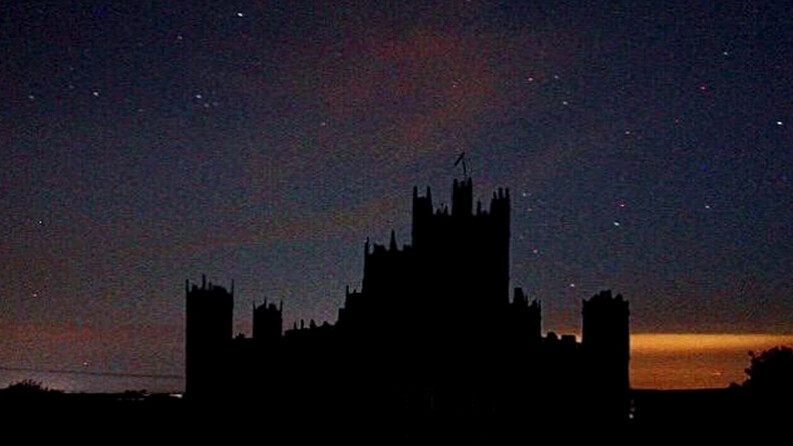
From Earth to Heaven
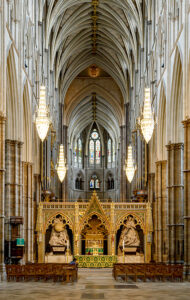 Today, all our thoughts and attention are with the processions and prayers taking place in Westminster Abbey for our final farewell to the Queen. It is a beautiful building for such a solemn occasion, adding to the soaring music and majesty of the event.
Winston Churchill once said: “ We shape our buildings; thereafter they shape us.” Many of the great cathedrals still extant today were created during what is often called the Age of Faith in the Middle Ages. The thirteenth and fourteenth centuries saw an explosion in the building of churches and cathedrals in order to help to ensure a place in Heaven. New techniques using pointed (gothic) arches allowed more space and light into the buildings compared to earlier circular constructions. The desire to bridge the transition between earth and heaven and the results can still be seen throughout Europe.
Today, all our thoughts and attention are with the processions and prayers taking place in Westminster Abbey for our final farewell to the Queen. It is a beautiful building for such a solemn occasion, adding to the soaring music and majesty of the event.
Winston Churchill once said: “ We shape our buildings; thereafter they shape us.” Many of the great cathedrals still extant today were created during what is often called the Age of Faith in the Middle Ages. The thirteenth and fourteenth centuries saw an explosion in the building of churches and cathedrals in order to help to ensure a place in Heaven. New techniques using pointed (gothic) arches allowed more space and light into the buildings compared to earlier circular constructions. The desire to bridge the transition between earth and heaven and the results can still be seen throughout Europe.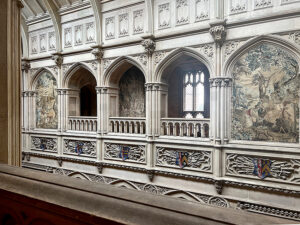 The architecture of Highclere is often described as gothic, or gothic Italianate. The symmetrical silhouette is detailed with pinnacles, corner towers and the Great Tower which reaches towards the sky. The Victorians took much of their architectural and symbolic inspiration from the middle ages, particularly from its legends of chivalry.
The architecture of Highclere is often described as gothic, or gothic Italianate. The symmetrical silhouette is detailed with pinnacles, corner towers and the Great Tower which reaches towards the sky. The Victorians took much of their architectural and symbolic inspiration from the middle ages, particularly from its legends of chivalry.
 Thus at Highclere, the glazed gothic windows which filter light into the Saloon above the Oak staircase reflect a cathedral style, its church-like architecture recalling the estate’s heritage when it was originally a bishop’s palace.
Thus at Highclere, the glazed gothic windows which filter light into the Saloon above the Oak staircase reflect a cathedral style, its church-like architecture recalling the estate’s heritage when it was originally a bishop’s palace.
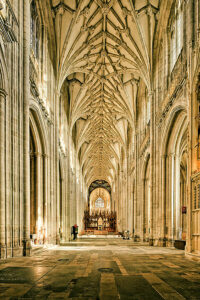 Highclere was owned by the bishopric of Winchester from its earliest days in the 8th century to the reformation of the churches under Henry VIII in the 1500’s and it was Bishop William of Wykeham (1324-1404) who built a medieval palace at Highclere. There was also a church and a chapel here, neither very large, but still at the heart of home and life. Wykeham’s cathedral, however, was in Winchester, twenty miles south of Highclere and one of the largest in Europe.
Today, all eyes will be on only one cathedral: Westminster Abbey, so named because it was the West Minster as opposed to St Paul’s which was the East Minster. The Abbey’s heritage is intertwined with the penultimate Anglo-Saxon King, Edward the Confessor, who was created a saint in 1163. Britain's oldest door can also be found in Westminster Abbey, it is in the passage leading to the Chapter House.
Highclere was owned by the bishopric of Winchester from its earliest days in the 8th century to the reformation of the churches under Henry VIII in the 1500’s and it was Bishop William of Wykeham (1324-1404) who built a medieval palace at Highclere. There was also a church and a chapel here, neither very large, but still at the heart of home and life. Wykeham’s cathedral, however, was in Winchester, twenty miles south of Highclere and one of the largest in Europe.
Today, all eyes will be on only one cathedral: Westminster Abbey, so named because it was the West Minster as opposed to St Paul’s which was the East Minster. The Abbey’s heritage is intertwined with the penultimate Anglo-Saxon King, Edward the Confessor, who was created a saint in 1163. Britain's oldest door can also be found in Westminster Abbey, it is in the passage leading to the Chapter House.
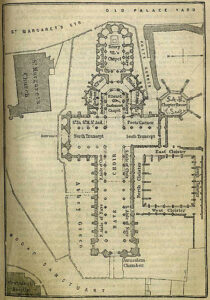 Funded and created by later Kings, Westminster Abbey’s religious space enfolds the concept of cathedral and sovereign power into one and later kings could claim kinship and devotion with the very first king buried here.
Much of Abbey was rebuilt around the year 1245 by Henry III in competition with the French King. It was the age of relics when enormous sums of money was spent on religious artefacts. Thus Louis IX of France had, at huge expense, bought the Crown of Thorns and was building a dazzling chapel on Paris’s Île de la Cité in which to place it reverently. In London, at the Abbey, Henry III committed money and men to create the tallest vaulted ceilings in the world at that time, a gothic inspired structure to laud both the king and the realm.
Funded and created by later Kings, Westminster Abbey’s religious space enfolds the concept of cathedral and sovereign power into one and later kings could claim kinship and devotion with the very first king buried here.
Much of Abbey was rebuilt around the year 1245 by Henry III in competition with the French King. It was the age of relics when enormous sums of money was spent on religious artefacts. Thus Louis IX of France had, at huge expense, bought the Crown of Thorns and was building a dazzling chapel on Paris’s Île de la Cité in which to place it reverently. In London, at the Abbey, Henry III committed money and men to create the tallest vaulted ceilings in the world at that time, a gothic inspired structure to laud both the king and the realm.
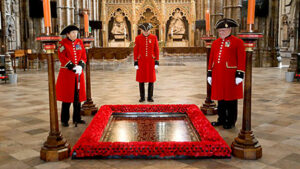 Today, Westminster remains a place of pilgrimage, both a mausoleum and somewhere to celebrate life. Poets, author, statesmen, Kings and Queens are interred here and remembered. Nor can anyone miss the grave of the unknown Soldier who stands for all those who perished in World War One.
Today, Westminster remains a place of pilgrimage, both a mausoleum and somewhere to celebrate life. Poets, author, statesmen, Kings and Queens are interred here and remembered. Nor can anyone miss the grave of the unknown Soldier who stands for all those who perished in World War One.
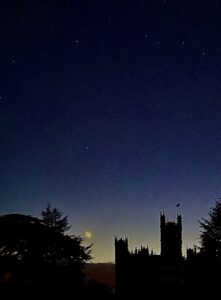 In addition, the Abbey remains a royal peculiar, subject to the direct jurisdiction of the monarch and therefore where all gather for today’s solemn events. It was here in November 1947 that Princess Elizabeth married Prince Philip of Greece, (H.R.H. The Duke of Edinburgh), here she was crowned Queen in June 1953 and here that she makes her final pilgrimage in September 2022.
Our reflections and thanks lead us all. “Stop all the clocks, …Bring out the coffin, let the mourners come” (WH Auden)
In addition, the Abbey remains a royal peculiar, subject to the direct jurisdiction of the monarch and therefore where all gather for today’s solemn events. It was here in November 1947 that Princess Elizabeth married Prince Philip of Greece, (H.R.H. The Duke of Edinburgh), here she was crowned Queen in June 1953 and here that she makes her final pilgrimage in September 2022.
Our reflections and thanks lead us all. “Stop all the clocks, …Bring out the coffin, let the mourners come” (WH Auden)
73 Comments
Dear Lady Canarvon
Sending my deepest sympathies to you & Lord Canarvon. May Her Majesty now rest peacefully with her beloved husband. Thank you Queen Elizabeth 11 for all your wonderful years of dedicated service
No more needs to be said . Beautiful words as always Lady Carnarvon..
My wife and I have watched BBC every day since the passing of Queen Elizabeth. We have known her as the Queen our whole lives
The respect and love shown by the English people exemplifies the love
of the Sovereign for her country and the Common Wealth.
Well done good and faithful servant.
It is truly a day of reflection. Her Majesty the Queen will be missed. Thank you for sharing the history behind Westminster Abbey. I have always been in awe of this beautiful cathedral when there was an event taking place inside the vast building. Thank you again for another lovely way to start my Monday mornings and to start the new week.
A solemn day filled with personal, communal, national and world memories. The Queen embraced us all.
Beautifully written.
Yes—Auden’s words are perfect. It DOES feel as if time has stopped, or should stop.
Even here in the U.S., many thousands of us mourn the passing of your glorious Queen. She served her nation faithfully for all her days, just as she promised as a very young woman. She was an inspiration to people all over the world.
God save the King. God Bless The Queen.
Thank you for this wonderful explanation of the origin and meaning of Westminster Abbey.
Sincere condolences to all the United Kingdom at the loss of your great Queen.
I have followed the life of Queen Elizabeth since I received a Little Golden Book about her coronation when I was a small child. More recently, I’ve made sure to watch her Christmas message, and have always admired her devotion to her people. Along with your own Highclere and many other notable places in the UK, it is my dream to visit Westminster Abbey, and like many around the world, I’ve been up since early this morning to view her funeral from here in the US. My condolences to the citizens of the UK upon the loss of your queen.
Beautifully written and thank you for the history! We all loved the Queen!
Watching the good state funeral service for Her Majesty Queen Elizabeth II on Wink TV channel 5 in Fort Myers, FL. Very respectful and well done. America also mourns and will miss this great states woman queen. Maybe someday I'll get to visit you after Highclere.
Beautiful post. Let the celebration of her life begin!!
What can I say, my heart is broken.
fondly Jenny
Lady Carnarvon lovely the pictures from earth and heaven has been a sad few weeks about queen Elizabeth11 for the country and lovely to visit highcelere castle and lam fan of Downton abbey thank you for send me your email very kind of you
Did you have a nice weekend and lord Carnarvon
Sending our condolences for the lovely Queen...from Kentucky USA.
Good Moening To EVERYONE!!
Today, marks the end of an ICON in world leaders. Just to see a picture of her brought peace to eyes of the beholder. NO, matter what the problem was her gentle look, her steady voice of determined action that had to be taken, for ALL to find a good night sleep throughout the world.
She was a lady, a wife, and most of ALL a mother. Not only to her own children, but to ALL of the children of the world. Tears along the road, rest assure that she see's everyone of us where ever we are.
When you saw her warm smiling face, on TV., Papers, magazine, you know for sure that warmth, love, and kindness was on its way!
So, as we ALL, watch through out the world, watch her passing parade, , KNOW that she is looking on us with love ,and, a Thank You,
So, God Bless our resting QUEEN,
And God Bless, Charles, our New KING!
Sincerely,
John L. Roberts
Tonawanda, N.Y. U.S.A.
Condolences to you, yours and wishing comfort to all who are mourning the loss of the remarkable woman who was your queen. Her shining intelligence and wisdom shone far beyond her realm and I join the countless faceless people who are grateful for the personal sacrifices she made to inspire the greater good in so many ways.
That was lovely. The Queen shall be sorely missed. Such a great icon. Rich in the history of the monarchy for such a long reign. Truly a great woman, Queen and soul. May she rest in peace!
Dear Lady Carnarvon, your words are always so eloquently spoken. Calming words, heart felt. I’m sitting at home in Florida in the US. Watching the Queens goodbye.Or, (till we’re together again), priceless.
Queen Elizabeth ll. Is a remarkable person. When you really stop and think about her rein and what’s she has accomplished. I think she’s the most influential person of our time.
We in America are mourning with all of you in the UK. Sending love to the royal family.
Long live the King, 2022
With kind regards, Lisa Dakdduk
Today all of the world mourns the loss of Queen Elizabeth.
Lady Carnarvon lovely pictures from earth to heaven very sad day for the country about queen Elizabeth11 and did you and lord Carnarvon have a nice weekend and l lovely to visit highcelere castle and lam fan of Downton abbey
Thank you, Lady Carnarvon, for adding so much to the ambience of the day. We feel very privileged to be participating in Her Majesty’s funeral and processional through London and home to Windsor from here in Philadelphia. We are deeply grateful for the life of service Her Majesty gave to her country and the world. As a 10-year-old at the time of the Coronation, I had several friends home to lunch in Geneva, New York, to witness the ceremony as film was quickly flown to the US for broadcast on television here. So Her Majesty’s reign has shaped my life.
I send condolences to you and your family as we understand how much Her Majesty valued the friendship she shared with it.
The history of this Abbey and the architectural masterpieces like Highclere are mesmerizing to all of us around the world.
Bless the Queen and all of her supporters on this day. Thank you as always for sharing with us.
Katie
USA
RIP HRH Queen Elizabeth II
I have been watching the funeral and procession from the United States. We all mourn for this strong and wonderful woman.
Blessings,
Pam
What a lovely tribute! Also a nice history not only of the Abbey but of Highclere as well.
Lady Carnarvon,
England’s majesty is solemnly being honored at this moment represented by Her Majesty’s lovely funeral and procession to her beloved Windsor. She was such a remarkable woman - strong and caring, for her family and her nation. I have been mesmerized by the events as they continue this morning.
Thank you for the marvelous pictures of these beautiful, magnificent buildings where monarchs and others deserving honor are entombed. The buildings really represent the strength of the English monarchy.
Martha G
Greetings Lady Carnarvon on this historic Monday.
Thank you for another beautiful, educational and wonderful Monday blog.
It is always so impressive to view and visit historic buildings in England and other European areas given their history, detailed architecture and beauty inside and out.
Given the past few days it is so impressive to see the dedication (via BBC broadcasts) of so many British citizens, and others from around the world too, willing to give so many hours of their daily lives to pay their respect to the life & the passing of Queen Elizabeth II. R.I.P. HRH.
So impressive and wonderful that traditions and respect for others is still a priority for all there.
Good luck to you, Lord Carnarvon and all other Britons living through this next era.
I have been watching the Queen's funeral here in Boston, Mass. I'm so sorry for your loss. Her death is a great loss for the world.
Dear Lady Carnarvon,
It was indeed an amazing and beautiful service for our late queen.
Westminster abbey is an incredible historic and most interesting place. My choir had the wonderful experience of singing the services there for a weekend some years ago and we were given a private tour of the abbey, seeing and learning far more than the general public ever do.
The queen has always been part of my life and she will be sorely missed. May she rest in peace.
Hope soon to make another visit to Highclere,we are volunteers with the National Trust at Killerton......so the portraits of John Acland in the Library and Kitty in the hall are very special to us.
My best wishes to you all on this very special and never to be forgotten day.
Dear Lady Carnarvon: What a beautiful funeral for Queen Elizabeth, II this morning (it's 10:50 a.m. here) at Westminister Abbey. I have cried many tears and lifted her, her family, and your nation up in prayer. There will never be another monarch like her. She had such poise and grace and never had fear of speaking of her faith. I had the honor of visiting England, Scotland and Wales a few years back and must confess, I was in awe visiting Westminister Abbey and many other beautiful churches. I hope to get back again, and this time visit Highclere. The service was so befitting for such a well loved queen. She is now at peace, God has taken her in His hands, she is now with Prince Philip and her other earthly family. God Bless The Queen, she will be so missed.
Donna G. Grubbs
Virginia, USA
P.S. I've been flying the Union Jack, along with the USA flag in honor of her incredible life.
My heart is with you. Watching the traditions and national mourning seems to help ground the mourners, giving some structure and way forward thru the first days. It's humbling and strengthening. God rest HRM, and thank you.
Thank you, as well, for this post and all your others. It's beautiful.
People around the world have been glued to the final pageantry of the interment of HRH Queen Elizabeth II .
She will take her place in the royal vault next to her Husband and sister.
The Queen has demonstrated to all of us the characteristics we should model. I note one characteristic they never mentioned: a sense of humor. RIP.
Sandie Carpenter Whitefish, Montana USA
With great sadness and tremendous respect to Her Majesty the Queen on this final farewell. To you who knew her and those who she reigned, my deepest condolences.
Amazing history, Westminster Abbey and it's many echo's of past lives that were held in such high regard. How does one begin to even fathom it? Only from those that keep the magnitude of the royal tradition and history alive.
Thank you for your words today. May others take a bit of time to think about how much these devoted people made their huge marks in our lives, in history...
Blessings to you and yours
Lady Carnarvon,
As I type this, I am watching the service just beginning inside St. George's Chapel.
Waking up at 2:30 in order to see the entire service at Westminster Abbey and now at the Chapel was the least I could do. What a moving tribute to the Queen, your husband's Godmother. My sympathies are with you both.
Lady Carnarvon
Thank you for taking the time to compose this reflection.
I will be keeping the people of the British Isles in my thoughts and prayers in the days to come.
I got up at 2:00 am here in California to watch the Queen's funeral and procession. As she said so long ago, she pledged her life, whether long or short, to the service of her people. That she did. Rest in Peace, Your Majesty.
I watched the entire service. God bless and God rest Queen Elizabeth, and God bless king Charles.
Excellent!
thank you Cheryl.
Dear Lady Carnarvon,
My thoughts are with you, your family, staff and your country on this day. I watched all eight hours of coverage of the Queen’s service starting at 3:00 A.M. this morning. It was an extremely moving and poignant service with processions and pageantry that only the British can do to that degree of excellence.
Queen Elizabeth was a marvel: full of compassion, courage, humor and steadfastness. Her moral compass was to be admired. We will all miss her terribly and hope that King Charles will make his mother proud. I am sure he will. God bless.
Diana Squibb
South Florida
Thank you for the interesting history lesson. I wasn’t able to watch the funeral, but did watch the committal. It was a beautiful service. Honored the Queen, but also honored the God she so faithfully served.
Blessings to you, Lady Carnarvon.
Hermosas palabras,! He visto el funeral..tan lleno de respeto y emoción por vuestra reina! Mis condolencias y que descanse en paz!
This is beautifully written. Thank you!
Our thoughts in America during these last days have been with the people of the United Kingdom as you have mourned your great Queen Elizabeth II. Since my daughter is now a permanent resident of the UK and I have a 2 1/2 year old English grandson, I watched the services and pageantry today with a stronger connection. Very beautiful and most impressive~unlike anything we see in America. Thank you for sharing your knowledge and perspective.
I watched the whole funeral and was very moved. I thought of your husband, since he is a godson of the Queen. I wondered if he attended the service? They mentioned the relatives would be attending, and I said a prayer for the Queen and her family. I will look forward to traveling in person to Windsor to pay my respects in person. God Save the King
God embrace those with heavy hearts on this most historical day, as the UK it’s common wealth and her Majesty’s nation of people bid thee farewell. Until we meet again, for we will. Rest Peacefully HM Elizabeth II.
Thank you Countess
" Earth to Heaven" captures our hearts.
Grieving with all of you across the pond. The Queen’s reign was extraordinary, the likes of which we won’t witness again in our lifetimes. We watched on livestream as she laid in State and we watched the funeral. Our sincerest sympathies to you on the loss of your beloved monarch. May she Rest In Peace. Long live the King!
Beautiful sentiments Gail Long Canada
The information about Westminster Abbey was new to me so thanks for that. You are an excellent historian! I got up in the pre-dawn hours to watch the Queen’s funeral service on tv. I’m very glad that I did as this was a monumental historical experience. The service was beautifully done. Rest In Peace, Queen Elizabeth.
God bless the new King! I wish him well.
Hello Lady Carnarvon
It is indeed miraculous architecture has given us Westminster Abbey
I thoroughly enjoyed watching the Queen’s funereal procession and the ceremonial transportation of the Royal coffin as well as I did enjoy the two church services at Westminster Abbey and St George’s Chapel Windsor! What a day! Or what a night! I’ve just spent six hours straight watching the ABC TV Livestream here in eastern Australia ( NSW mid state) and now I am wide awake as the broadcast did not finish until well after 2 am. I thought the Prince of WALES looked splendid in his uniform and after a very long solemn day it was great to see King Charles III laughing and smiling outside St George’s Chapel Windsor
Lady Caernarfon
Thank you for the wonderful Monday blog.
I turned on my television at 5 am today and watched in awe at the beautiful funeral for our wonderful Queen.
As I watched the parade and procession it occurred to me all the work and arranging that went into making it such a success.
The training of men,women and horses must have taken hours.
God bless King Charles and the entire Royal Family
Kathleen from Ontario Canada.
Thank you.
Earth to earth, ashes to ashes, dust to dust...life is a crossing from earth to Heaven and what remains forever is only the most valuable thing: the time and love we gave to the others. Have a good week
Perhaps because millions are mourning history may be changed!
Heather Mills
Dear Lady Carnarvon,
My thoughts and prayers are with you all, and especially her family, as Queen Elizabeth makes her final journey and the nation grieves. Many here in the USA share the great sense of loss as an era comes to an end. May we all take something good from the examples she set, and stitch it into our lives. Grace beyond measure.
God save the King.
Thank you.
Best regards,
Charlotte Merriam Cole
This day, the day of Queen Elizabeth’s being laid to her well deserved rest, I can mentally close the Album I carefully made of her as She and I were very young children. All through WW 11 I worried about her safety, picturing her and Margaret deep in the reaches of Windsor Castle, while their parents braved the bombs falling on Buckingham Palace. I was so grateful they all survived. She was approaching a century of life, as am I, and I treasure her album pages of friendship. They helped me through years of fear.
Lady Carnarvon, For me you always write with such heartfelt emotion. Your story today is very much felt to the core of my heart. So very beautiful. Cheryl.
Lady Carnarvon,
I can’t tell you how much it means to have such wonderful information about such a beautiful and heroic lady.
Your new King has a tender heart, much like his Mother, and a ‘Good Head’ as we Americans say. We have watched the Queen’s Funeral twice now, and know how tremendously difficult it has to be for EVERYONE. It was a magnificent service and it goes without saying that they are ALL in our prayers!
Your extra information is as always- SO SPECIAL. Thank You for sharing with us.
Sincerest Regards, Jane Hrabak
Dear Lady Carnarvon,
Auden's poem has been the best way to express the immense sorrow one feels when someone you love dearly, dies. It helps us through my father-in-law and my dear late husband's ceremonies. But, as the Queen herself said: "Grief is the price you pay for Love". I believe that for many people not just in the UK but around the world, she was a guiding light, someone you could rely upon, a morning star. And now that she has gone, for ever....it is very very sad to think that we will never see her again, or hear her again, or listen to her words of wisdom. And as she also said in a recent address to the nation: "We will meet again.." We certainly will, specially at Christmas time, just round the corner, when the King will give us his speech. That last song played by the Windsor's piper and walking away, symbolized her departure for eternity. May we learn from her to be wiser and patient, loving and strong. We will miss you, your Majesty.
Such a very sad time. Will take some time to get use to having a King will miss her presence at Ascot and Windsor horse show. Rest in peace Elizabeth the great. Long live the King.
Lady Carnarvon,
It is always an interesting to go back in time and experience history through your blogs. The ceremony and procession today was solemn and inspiring of the fabulous example and legacy of Queen Elizabeth I I. May she continue to inspire us all.
It was well worth staying up all night to mourn and celebrate Her Majesty. There is no one in America we love as the British loved their Queen. So I loved to honor her. Listening to different people’s remembrances I learned so much more about her life behind the camera lens. King Charles has huge shoes to fill! But I’m sure he will not stray far from his mother’s foot steps. The strong traditions in Westminster and Windsor Chapel are due to her unwavering faith in Jesus Christ. Her Majesty would be so proud of the wonderful execution of every detail of her funeral. I saw a lot of detail in the 9 hours of PBS coverage! God bless The Royal Family!
How beautifully written. I can almost imagine being there and seeing it in person by your descriptions. I love the end quote by W. H. Auden.
My thought is that there are many Women on this earth and very few Ladies. Queen Elizabeth II was definitely a true Lady. May she rest in eternal peace with her beloved Husband.
Thank you for your lovely thoughts. Even though I am American, my heart hurt when I learned the Queen had passed. We were in Scotland and England a little over a month ago and got to visit Balmoral, Frogmore House and Buckingham Palace. And even though we were not part of the official Platinum Jubilee, we got to experience the spillover and it was very obvious from the people we met that Her Majesty was deeply loved. We were glad we got to visit in happier times. So sad for the people of the UK and also for all of the non British all over the world who loved and respected the Queen. I cannot imagine a world without her. God bless King Charles and Queen Consort Camilla.
I'm American but I recognize the end of an era and the loss of a dedicated, selfless woman. My condolences.
Thank you for making the pix clickable. They were beautiful.
MINHA QUERIDA LADY CARNARVON,
BOM DIA DO BRASIL,
HOJE A INGLATERRA E O MUNDO INTEIRO AMANHECEU DE UM JEITO MUITO DIFERENTE, POIS, PERDEU SUA MAIOR REPRESENTANTE DOS ULTIMOS TEMPOS, A RAINHA ELIZABETH 2 °. UMA NOVA ERA SE INICIA E QUE DEUS SALVE O REI CHARLES 3°.
VILA ALEMÃ
RIO CLARO - SP
BRASIL
Tout d'abord, je vous présente mes plus sincères condoléances, ainsi qu'à tout le peuple Britannique. Une grande Dame s'en est allée et avec elle tout le siècle dernier. j'avais une grande admiration pour Elle, et si je n'ai pu me rendre à Londres , j'ai suivi toute la semaine , et surtout toute la journée d'hier tout les hommages qui lui ont été rendus.
Une page magistrale de l'histoire du Royaume Uni s'est tournée et je souhaite un grand courage au Roi Charles III pour l'immense tâche qui lui incombe maintenant.
Bonne journée
Dear Lady Carnarvon:
Thank you for taking the time to present your Monday blog and for the beautiful pictures.
I watch the televised funeral on two different stations, the local ABC affiliate and the (Windsor, Ontario, Canada) CBC station. Coverage was the same from both stations, but the commentary was country based and historically specific. If either you or Lord Carnarvon attended any portion of the weeklong funeral events, perhaps you would consider sharing your personal feelings with this readership.
Again, my sincere condolences to you, Lord Carnarvon, the people of the United Kingdom, the Commonwealth, and all realms. May Her Royal Majesty, Queen Elizabeth II rest in peace.
Until next week, all the best to you and may God Save the King.
Dear Lady Carnarvon,
I add my prayers to all the rest. I feel as if I lost another Grandmother, even though I was never able to meet her.
God save the King.
Sue Smith
Englewood, Florida
Lovely words as always. Thank you for this background of the cathedral as the world watched together for you beloved Queen.
If “grief is the price we pay for love” as The Queen said, the love for her around the world is great indeed.......
"Do not weep for me for I have not gone. I am the wind that shakes the mighty Oak. I am the gentle rain that falls upon your face. I am the spring flower that pushes through the dark earth. I am the chuckling laughter of the mountain stream. Do not weep for me for I have not gone. I am the memory that dwells in the heart of those that knew me. I am the shadow that dances on the edge of your vision. I am the wild goose that flies south at Autumns call and I shall return at Summer rising. I am the stag on the wild hill's way. I am just around the corner. Therefore, the wise weep not. But rejoice at the transformation of my Being."~~~author unknown
Dear Lady Carnarvon
What A lovely tribute! It was with heavy hearts that we received the news of the beloved Queen’s passing just hours after we had arrived in England and driven to Newbury to settle in at the Carnarvon Arms in preparation for attending the event at Highclere that weekend. We know your hearts must have been heavy with grief and yet your presence at the event cheered us and was very memorable. Thank you for coming out at the “magic in the movies” event to smile and laugh even though we know that you must have been very heavy with mourning. As we traveled around the countryside and into London over the next few days it was a privilege to be able to visit the memorials and tributes set up to the precious Queen and to feel just for a moment that we were a bit British as we grieved alongside you all. Even though we are from America, we felt the loss of someone who has been a constant in all of our lives for generations. To have had the great privilege and honor to queue up and file past her lying in state is something we will always cherish and never forget. Thank you for your words and please continue to write as they are going to help all of us who read them to heal even as we grieve
Thank you again for sharing your beautiful home with us during this time all and may God rest her soul and give comfort to you all.
Are thoughts and prayers are with all the Queens relatives and all those that called her Queen and her admirers and all of us across the pond who have followed her through the years. Rest In Peace. Thank you Lady Carnarvon for your beautiful words and history information.
I was in hospital when the queen died. It was terrible news. Just over a month ago now. I was a day or two post-op and wasn't sure if I was dreaming or not. I couldn't turn the TV on to watch.
Thank you so much for writing this and sharing your knowledge of the history of this beautiful place. I hope to share it with my children in due course.
I was watching Downton Abbey this evening and had to know which arch it was that Lady Sybil and Gwen were near. Which led to my electronic presence here. I am eternally grateful for those, such as yourself Lady Carnarvon, who continue the conveyance of our heritage on to others so that it may never be forgotten.
I can only hope that my children care and value it as much as I do. Thank you.
Queen Elizabeth II rests in the arms of God. The tribute to her life was moving. I can't imagine an England without her.
I never actually spoke with her, but I feel blessed to have been in close proximity to her on three occasions. The first was in a motor procession, the second was as she was leaving Windsor Castle for Ascot, and the third was as she was presenting trophies at the Royal Windsor Horse Show.
She was an amazing person and a remarkable Queen.
She was
Leave a Comment
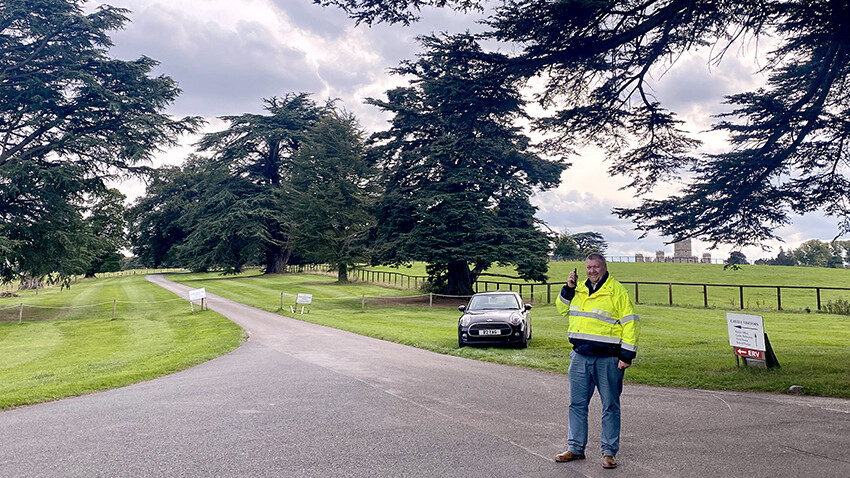
- Christmas
- Community
- Dogs & Horses
- Egypt & Tutankhamun
- Entertaining
- Farm
- Filming
- Gardens
- History & Heritage
- Daily Life
- Royalty
- Cooking
- Interiors
- Heroes
- Architecture
- Cars
- Conservation
- Downton Abbey
- Events
- Gardens & Landscape
- Highclere Castle Gin
- History
- Planes
- Restoration
- Stories & Books
- Uncategorized
- Visitors
- Wildlife

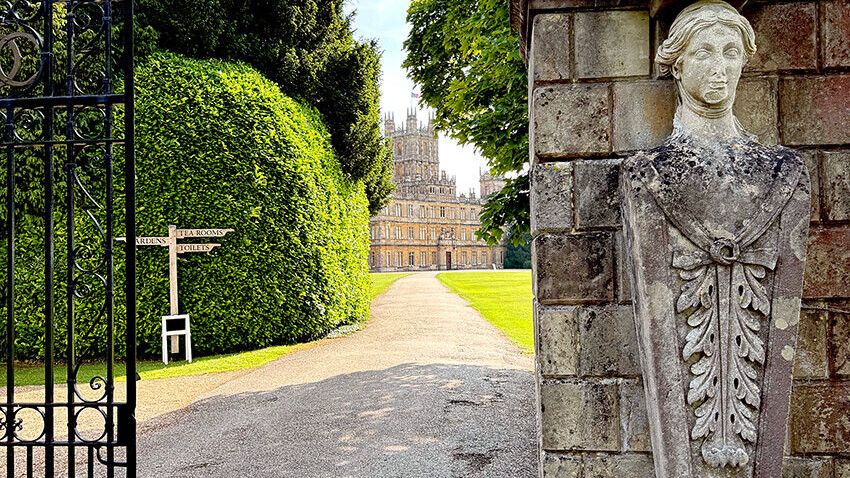
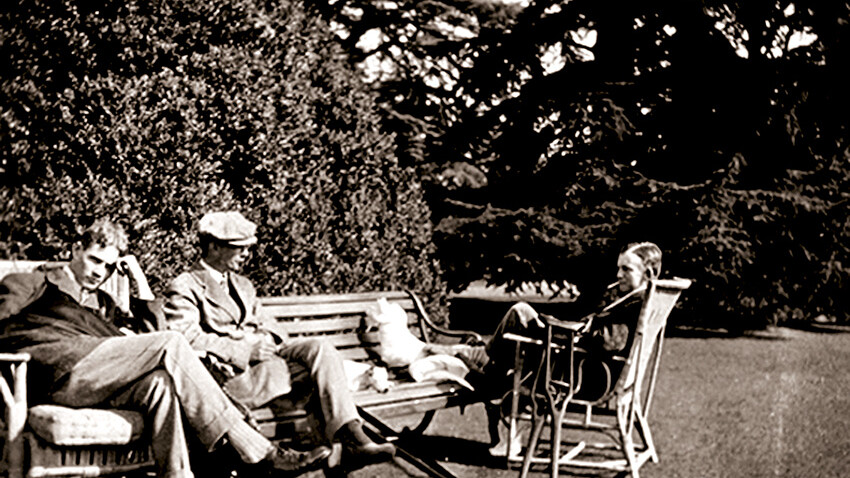

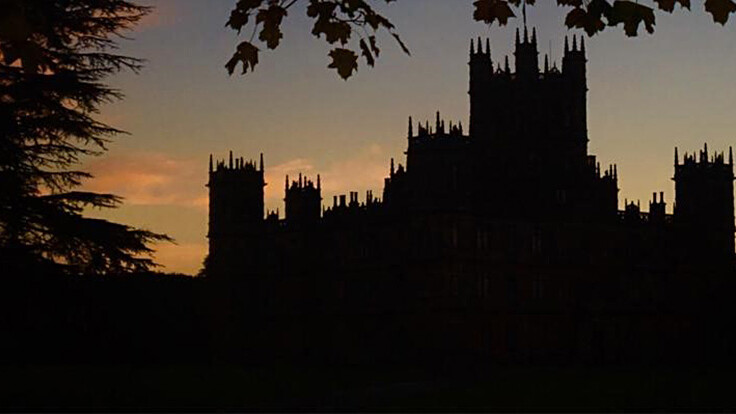
Very moving ceremony thus far.May she rest in peace.
Dear Lady Carnarvon,
Another American here, adding my condolences for the loss of your incomparable Queen. As President Macron said, She was your Queen, but to the rest of the world, she was The Queen. Godspeed and rest in peace for a life marvelously led, Ma'am.